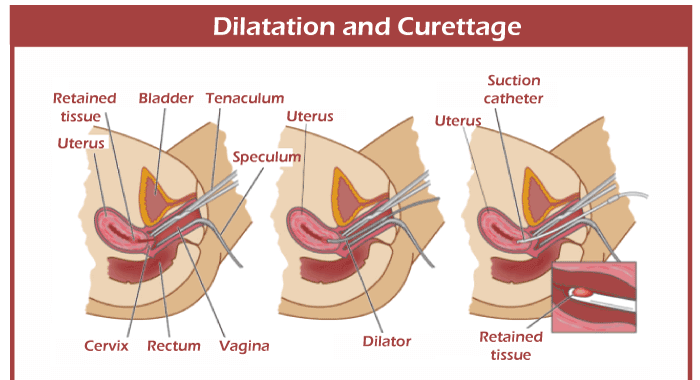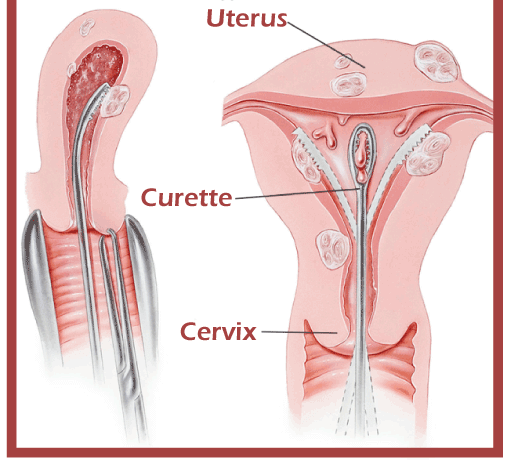What is the full form of DNC1. DNC: Democratic National CommitteeDNC stands for Democratic National Committee. The United States Democratic Party is led by the Democratic National Committee (D.N.C.). In addition to working to build a "party brand," the Committee organizes strategies to assist Democratic Party candidates around the nation for local, state, and national office. Every four years, it plans the Democratic National Convention, where a candidate for President of the United States is chosen, and the party program is established. 
Although it supports party candidates, it has no power over elected officials. The White House influences the Committee under a Democratic president. Boris Heersink asserts that political scientists have always viewed the parties' national committees as insignificant but impartial service providers. The D.N.C. was founded in 1848. To finance its operations, it organizes fundraising events. The Committee chooses the chairperson. The D.N.C. is in charge of organizing party organizational activity and outlining and promoting the Democratic platform. The Democratic Party typically collaborates closely with the President when they are a Democrat. It manages the national convention, raises money, commissions polls, and plans the campaign strategy independently and in collaboration with the presidential candidate during presidential elections. The public funding regulations allow the national party to coordinate spending with the party nominee after the nominee is chosen. Still, extra monies are used for broader party-building activities. The Democratic National Committee's chairwoman is chosen by voting among its members. The D.N.C. is made up of the chairs and vice chairs of the central committees of each state's Democratic Party, 200 members who are distributed among the states according to population and are typically chosen by primary voters or state Democratic Party committees, several elected officials serving ex officio, and a variety of representatives of important Democratic Party constituencies. The D.N.C. sets the guidelines for the caucuses and primary that determine the Democratic National Convention (D.N.C.) chooses the delegates. However, the state-by-state administration of the caucuses and primaries is more common than not. State governments always conduct elections, including primaries, following their respective laws. Although political parties can participate or not in a state's primary election, no political party leaders have any control over the dates or procedures of primary elections. Each D.N.C. member is a superdelegate to the Democratic National Convention, and their influence on a tight primary race can be significant. According to other roles they hold, these delegates, who are technically known as "unpledged party leaders and elected official delegates," fall into three categories:
Jaime Harrison, a former South Carolina Democratic Party leader, is in charge of the leadership. Sam Cornell, a former D.N.C. chief of staff, is the group's executive director. Alana Mounce, a former Nevada State Democratic Party executive director, serves as the party's political director. Anatole Jenkins, a former national organizing director for Kamala Harris for the People, is the head of staff. Keisha Lance Bottoms is the vice chair for voter participation and civic engagement. HistoryDuring the 1848 Democratic National Convention, they passed a resolution creating the Democratic National Committee. It was headed by Benjamin Harrison and comprised thirty members from each state, chosen by the state delegations. Deputy Chairs
Vacant Chairs
A National Advisory Board is also present for fundraising and executive guidance. Elizabeth Frawley Bagley, a former American ambassador to Portugal, is the current chair. Vice ChairsTom Perez reinstated the position of Deputy Chair of the Democratic National Committee in February 2017 following his victory in the 2017 D.N.C. Chair election. After narrowly defeating Congressman Keith Ellison of Minnesota, Perez named Ellison as Deputy Chair to heal the party's divisions following the divisive 2016 Democratic presidential primaries, which included fights between Hillary Clinton and Bernie Sanders supporters. Perez and Ellison were seen as more aligned with the Clinton wing and the Sanders wing, respectively. Critics characterized the role's reintroduction in 2017 as nominal and ceremonial. Due to his victory in the Minnesota Attorney General race, Ellison announced his resignation on November 8, 2018. The role is still vacant. ControversiesWatergate The Watergate complex, where the D.N.C.'s headquarters were located in the 1970s, was broken into by people working for the Nixon administration during the Watergate crisis. Chinagate Chinagate refers to a purported effort by the People's Republic of China to influence domestic American politics before and during the Clinton administration. The Democratic National Committee received a $115,000 fine from the Federal Election Commission in 2002 for its involvement in fundraising irregularities in 1996. Online attacks Cyberattacks has happened against the Democratic National Committee from 2011 through 2016 and Debbie Wasserman Schultz presided over the D.N.C. Several people and groups, including the following, have claimed responsibility for cyberattacks and hacks. Security specialists and committee members claim that they found two rival Russian intelligence services on the D.N.C. One intelligence service entered the network successfully starting in the summer of 2015, while the second service entered and roamed the network beginning in April of 2016. The two teams accessed emails, chats, and study materials about a rival presidential contender. In June 2016, they kicked them out of the D.N.C. system. The Democratic National Committee's emails were allegedly leaked to the publication The Hill after the hacker Guccifer 2.0 claimed to have gotten into the Committee's computer network. Robby Mook, the campaign manager for Hillary Clinton, acknowledged experts who claimed that the Russians were responsible for the D.N.C. email breach but did not specifically name them during a Jake Tapper interview on CNN. The Guccifer 2.0 claim was debunked by the media and cybersecurity companies because investigators now think Guccifer 2.0 was a G.R.U., the military intelligence agency of Russia. Email leak from 2016 Emails leaked from the Democratic National Committee in 2016 and also from D.N.C. Services Corp. v. Wilding. WikiLeaks revealed about 20,000 DNC emails on July 22, 2016. The sixteen months covered by the stolen emails ended in May 2016. Hillary Clinton's nomination was allegedly unfairly supported by the Committee, while they opposed Bernie Sanders' primary challenger campaign. Donna Brazile supported these claims in an extract from Politico's book in November 2017. Debbie Wasserman Schultz, the chairperson, and Luis Miranda, the communications director. Brad Marshall, the chief financial officer. And Amy Dacey, the C.E.O., resigned due to the WikiLeaks disclosures. Wasserman Schultz released a statement following her resignation discussing potential F.B.I. assistance. The D.N.C. was never notified by the F.B.I. or any other agency concerned about these incursions, according to the investigation into the hacking and leaks. The F.B.I. requested access to the D.N.C.'s systems but was denied, according to James Comey, who testified at a Senate hearing in January 2017. Additionally, he stated that older versions of the R.N.C.'s servers had been compromised but that the most recent databases at the time were unaffected. In response, the D.N.C. sued WikiLeaks and other parties in federal court, alleging a plot to sway the election. 2. DNC: Dilation and CurettageWhat is A dilation and curettage (D&C) ? In medical field Dilation and Curettage is either pronounced as D&C or DNC. (Dilation and Curettage, abbreviated D&C) DNC stands for Dilation and Curettage. A D&C, or dilation and curettage, is a surgical operation in which the cervix (lower, narrow section of the uterus) is widened (stretched) to allow the endometrium (uterine lining) to be scraped with a curette to remove abnormal tissues) from the uterus. 
Other related operations include hysteroscopy, hysterectomy, and endometrial ablation to identify and treat the endometrium. Dilation (or dilatation) and curettage (D&C) is the medical term for enlarging or opening the cervix and surgically removing some of the uterine lining and its contents (curettage). It is the most often utilized technique for miscarriage or abortion in the first trimester and is a gynecologic treatment used for diagnostic and therapeutic purposes. D&C typically refers to a curette-based procedure known as a sharp curettage. However, some sources use the term "D&C" to refer to any procedure that entails dilating the uterus and expelling its contents, including the more widely used suction curettage methods of manual and electric vacuum aspiration. Applications In MedicineDifferent clinical indications may warrant performing D&Cs on pregnant individuals and those who are not. In non-viable pregnancies, such as missed or incomplete miscarriages, or unwanted pregnancies, such as surgical abortions, a D&C may be performed early to remove pregnancy tissue throughout pregnancy or postpartum. Safe, non-invasive, and potentially less expensive alternatives to D&C include medical management of miscarriage and medical abortion using medications like misoprostol and mifepristone. The most common method for stopping the first-trimester pregnancy is still suction curettage. However, dilation and curettage have been losing popularity because of abortion due to the availability of medication-based non-invasive alternatives. The World Health Organization advises using a sharp curette and D&C as a surgical abortion technique when a suction curette is not available for a manual vacuum aspiration. Doctors may recommend a D&C for patients recently giving birth to remove any remaining placental tissue that does not pass naturally or treat postpartum haemorrhage. Those Who Are Not PregnantIn non-pregnant patients, D&Cs are frequently performed to diagnose gynaecological conditions that result in abnormal uterine bleeding, remove the extra uterine lining in cases of polycystic ovary syndrome, and remove tissue from the uterus that may be the source of abnormal uterine bleeding, such as endometrial polyps or uterine fibroids, or to determine the underlying cause of postmenopausal bleeding, such as endometrial cancer. Hysteroscopy is a valid alternative to or addition to D&C for many surgical indications, including the identification of uterine illness, the removal of fibroids, and even the removal of retained pregnancies. It enables direct observation of the uterus interior and might enable targeted tissue removal from the uterus. ProcedureAn example of a procedure using dilatation and curettage 
A D&C can be performed under local anesthesia, moderate sedation, deep sedation, or general anesthesia, depending on the procedure's length, difficulty anticipated, clinical necessity, and patient preferences. A speculum is put into the vagina at the initial step of a D&C to view the cervix. A tenaculum is frequently used to keep the cervix stable. The doctor will then dilate the cervix. You can accomplish this using Hegar or comparable dilators. The size of the instruments to be used and the volume of tissue that needs to be removed impact how much dilation occurs. Once the cervix has adequately dilated, a curette, a metal rod with a handle on one end and a loop on the other, is inserted into the uterus through the dilated cervix. The uterine tissue is removed with a curette, which gently scrapes the uterine lining. If a suction curette is used, as in a vacuum aspiration, and paired with suction to remove all uterine tissue, a plastic tube curette will be placed into the uterus. This tissue is examined for completeness or pathology for anomalies when treating an abortion or miscarriage (in the case of treatment for abnormal bleeding). ComplicationsThe most frequent side effects of D&C include infection, bleeding, or injury to adjacent organs, including uterine perforation. In addition to the surgery, difficulties with administering anesthetic are also possible. Infection after D&C for a non-pregnant patient is uncommon, and professional practice recommendations do not suggest routinely giving patients prophylactic antibiotics. However, there is a larger risk of infection when a pregnant patient is undergoing curettage. Thus, patients should be given antibiotics that cover the common bacteria found in the vagina and gastrointestinal system; doxycycline is one such medication, while we may also take azithromycin. Uterine perforation is yet another danger of D&C. A perforation could harm organs outside the uterus or result in severe bleeding. The postpartum hemorrhage situation seems to have the highest rate of uterine perforation (5.1%) compared to diagnostic curettage in non-pregnant individuals (0.3% in premenopausal women and 2.6% in postmenopausal patients). A laparoscopy may be performed to ensure that there hasn't been undiscovered damage if the medical professional is worried about continuous bleeding or the potential for harm to organs beyond the uterus. Intrauterine adhesions, often known as Asherman's syndrome, are another concerns. One research found that between 14 and 16 percent of women with one or two acute curettage procedures for miscarriage also had some adhesions. Women who underwent three sharp curettage procedures for miscarriage had a 32% higher risk of adhesions. In women who had a D&C after a missed miscarriage and those who had one between four and eight weeks after giving birth, researchers found the risk of Asherman's syndrome to be 30.9% and 25%, respectively. Untreated Asherman's syndrome also raises the chance of difficulties in subsequent pregnancies, including ectopic pregnancy, miscarriage, and improper placentation, especially if it is severe (such as placenta previa and placenta accreta). Recent case reports indicate that intrauterine adhesions can also result from vacuum aspiration usage. According to a 2013 systematic study, D&C and repeated miscarriages are the two leading causes of intrauterine adhesions. However, the same investigation also revealed that there is no evidence linking intrauterine adhesions to long-term reproductive outcomes and that similar pregnancy outcomes have been reported concerning surgical care (including D&C), drug management, or conservative management which is, watchful waiting.
Next TopicFull Form
|
 For Videos Join Our Youtube Channel: Join Now
For Videos Join Our Youtube Channel: Join Now
Feedback
- Send your Feedback to [email protected]
Help Others, Please Share










